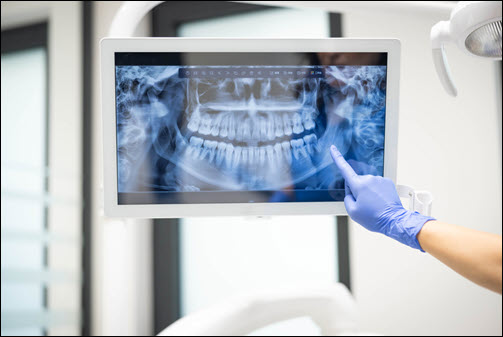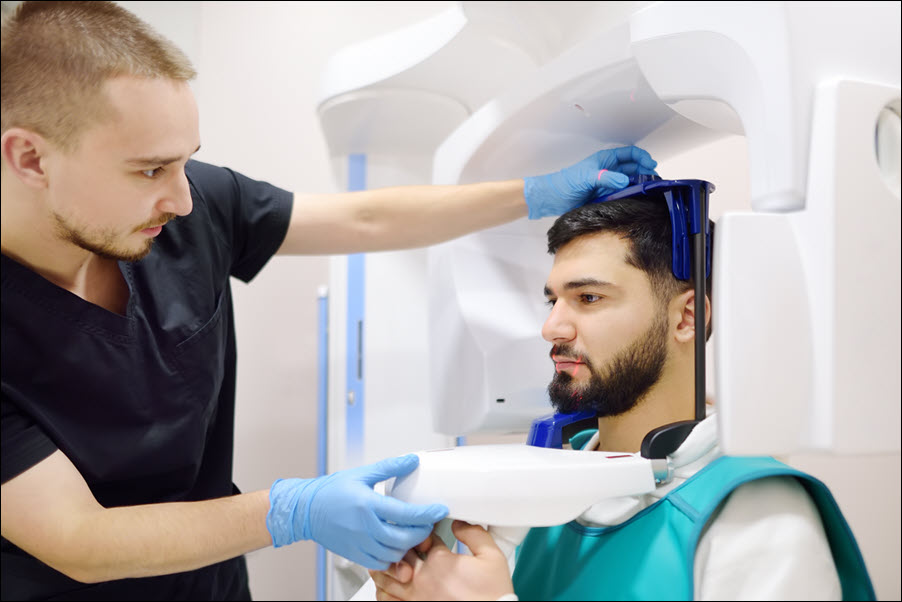Digital dental X-rays provide a safe and accurate way to diagnose dental problems. They use low radiation levels to capture detailed images of teeth and jaw structures. Digital technology improves image quality and reduces patient exposure to radiation. Dentists use digital X-rays to detect cavities, bone loss, and tooth alignment issues. Enhanced diagnostics allow for early treatment and better outcomes. Digital X-rays store images electronically, improving record accuracy and accessibility. Faster processing times reduce discomfort and increase patient convenience. Understanding the benefits of digital dental X-rays ensures better oral health and comfort. Let’s explore how digital X-rays improve dental safety and diagnostics.
Lower Radiation Exposure Improves Safety
Digital dental X-rays use up to 90% less radiation than traditional film X-rays. The digital sensors require less exposure time to capture clear images. Lower radiation levels reduce health risks, making the procedure safer for children and adults. Dentists use lead aprons and thyroid collars to protect sensitive tissues. Faster imaging reduces the need for repeat exposures and minimizes patient discomfort. Advanced digital technology adjusts exposure levels based on patient size and bone density. Reduced radiation levels make X-rays safe for patients with medical conditions. Lower exposure improves patient confidence and safety. Consistent monitoring ensures proper safety standards and accurate imaging.
Higher Image Quality Improves Diagnostic Accuracy
 Digital X-rays provide sharper and more detailed images than traditional film. High-resolution images allow dentists to detect cavities, cracks, and early-stage gum disease. Digital technology enhances contrast and brightness for better visualization of tooth and bone structures. Dentists magnify and adjust images to examine hard-to-see areas. Improved image clarity increases diagnostic accuracy and treatment success. Digital X-rays also show changes in tooth alignment and bone density over time. Enhanced imaging helps dentists plan orthodontic treatments and dental restorations. Better image quality allows earlier detection of dental issues. Improved diagnostics reduce the need for complex treatments and increase success rates.
Digital X-rays provide sharper and more detailed images than traditional film. High-resolution images allow dentists to detect cavities, cracks, and early-stage gum disease. Digital technology enhances contrast and brightness for better visualization of tooth and bone structures. Dentists magnify and adjust images to examine hard-to-see areas. Improved image clarity increases diagnostic accuracy and treatment success. Digital X-rays also show changes in tooth alignment and bone density over time. Enhanced imaging helps dentists plan orthodontic treatments and dental restorations. Better image quality allows earlier detection of dental issues. Improved diagnostics reduce the need for complex treatments and increase success rates.
Faster Processing and Immediate Results
Digital X-rays produce images within seconds. The digital sensor transfers the image directly to a computer screen. Faster processing reduces patient wait times and discomfort. Dentists immediately analyze the images and adjust treatment plans. Instant feedback improves patient understanding and treatment decisions. Faster processing increases the accuracy of dental procedures like crowns, implants, and fillings. Real-time results reduce the need for follow-up appointments and additional imaging. Faster diagnostics improve emergency dental care and treatment planning. Immediate imaging reduces patient anxiety and increases confidence. Better processing times create a more efficient and comfortable dental experience.
Better Monitoring of Dental Changes
Digital X-rays store images electronically for easy retrieval and comparison. Dentists track changes in tooth alignment, bone density, and root health over time. Historical images help identify patterns and detect early signs of dental problems. Regular monitoring improves the success of orthodontic and periodontal treatments. Dentists use stored images to measure cavity progression and gum health. Better tracking improves the accuracy of root canal therapy and dental implants. Long-term monitoring increases patient comfort and treatment success. Digital storage increases data security and reduces record loss. Better monitoring improves overall dental health and patient satisfaction.
Eco-Friendly and Cost-Effective
Digital X-rays reduce environmental impact by eliminating film and chemical processing. Traditional X-rays require chemical solutions that create toxic waste. Digital technology reduces waste and improves processing efficiency. Electronic storage reduces paper use and improves record management. Lower radiation levels and faster processing reduce equipment wear and maintenance costs. Fewer repeat exposures reduce resource consumption and improve patient safety. Lower operational costs reduce patient expenses and improve care accessibility. Digital systems increase the lifespan of X-ray equipment and reduce repair costs. Eco-friendly technology reduces dental office waste and environmental impact. Better efficiency improves long-term cost savings and dental care access.
Improved Patient Communication and Comfort
Digital X-rays allow dentists to show images directly to patients on a computer screen. Clearer images improve patient understanding of dental problems and treatment plans. Dentists explain conditions like cavities, bone loss, and gum disease using high-resolution images. Better patient understanding increases confidence and cooperation during treatment. Faster results reduce patient anxiety and improve comfort. Enhanced imaging reduces the need for uncomfortable positioning and repeat exposures. Digital sensors are smaller and more comfortable than traditional X-ray film. Improved communication increases trust and patient satisfaction. Better comfort encourages regular dental visits and better oral care habits. Enhanced patient education improves long-term dental health.
Supports Advanced Dental Procedures
Digital X-rays improve the accuracy of advanced dental treatments. Dentists use detailed imaging to plan dental implants, crowns, and root canals. Precise measurements improve the fit and success of dental restorations. Digital imaging identifies nerve location and bone density for better surgical planning. Dentists also use digital X-rays to diagnose impacted teeth and jaw alignment problems. 3D imaging enhances orthodontic planning and bite correction. Improved accuracy increases treatment success and reduces complications. Better imaging supports faster healing and improved comfort. Enhanced diagnostics increase the lifespan of dental restorations and implants. Better treatment outcomes improve overall patient satisfaction and dental health.
Digital dental X-rays provide safer and more accurate diagnostics. Lower radiation exposure increases patient safety and comfort. High-resolution images improve diagnostic accuracy and treatment success. Faster processing and real-time results reduce patient wait times and discomfort. Digital storage allows for better long-term monitoring and treatment planning. Eco-friendly technology reduces waste and improves cost efficiency. Enhanced imaging supports advanced dental treatments and increases success rates. Better patient communication improves trust and understanding of treatment plans. Investing in digital X-ray technology strengthens long-term dental health and comfort. Safer procedures and better diagnostics create a more confident and healthier smile.

